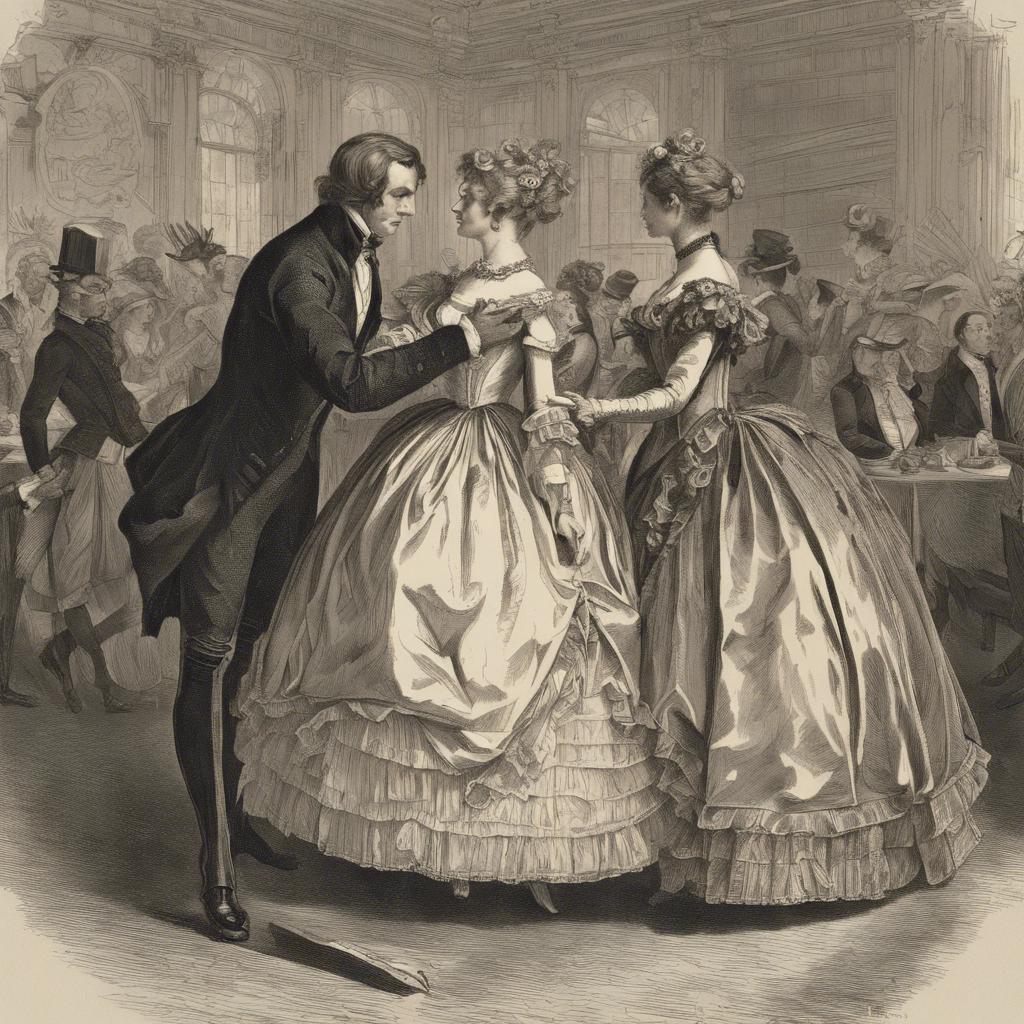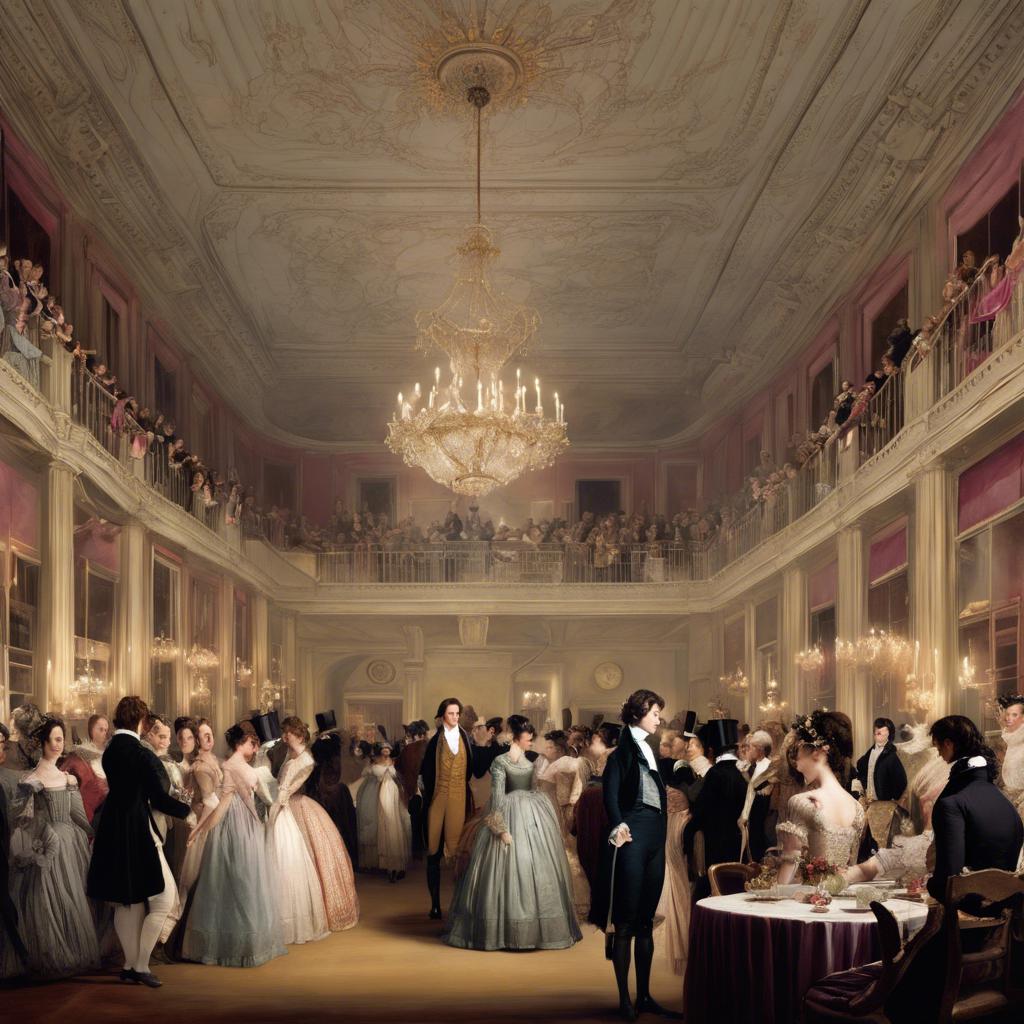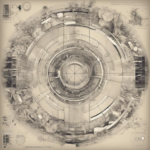In the Regency era, the social event of the season was the grand ball held at Netherfield Park. Known for its elegant decor, lavish entertainment, and esteemed guest list, the Netherfield ball was a spectacle that brought together the elite members of British society. However, beneath the veneer of sophistication and glamour, regency era pride and prejudice”>intricate social dynamics and underlying tensions bubbled to the surface, as immortalized in Jane Austen’s iconic novel “Pride and Prejudice”. This article delves into the significance of the Netherfield ball in shaping the romantic entanglements and societal power struggles portrayed in Austen’s timeless masterpiece.
Step Into the World of Cheryl Bolen
Dive into the enchanting stories of love, intrigue, and elegance set in the Regency Era. Cheryl Bolen's novels offer timeless romance and captivating tales that will leave you wanting more.
Explore Cheryl Bolen's Books Now
The Art of Courtship at the Netherfield Ball
The Netherfield Ball was a sight to behold, with the grandeur of the ballroom setting the stage for an evening of elegant courtship and social interactions. As the attendees glided across the dance floor, the art of courtship was on full display, with subtle gestures and meaningful conversations shaping the connections between the guests.
During the ball, the intricate dance routines provided the perfect opportunity for the gentlemen and ladies to engage in polite conversation and showcase their social graces. The gentlemen, with their charming smiles and elegant manners, vied for the attention of the ladies, while the ladies, with their graceful movements and captivating presence, held court in their own right.
As the night progressed, the atmosphere was alive with the energy of courtship, as couples engaged in lively discussions and flirtatious banter. The Netherfield Ball was not just a social event but a stage for the art of courtship, where hearts were won and lost, alliances were formed, and the dance of love played out under the watchful eyes of the attendees.
Unveiling Social Etiquette and Class dynamics at the Netherfield Ball
The Netherfield Ball in “Pride and Prejudice” serves as a microcosm of social etiquette and class dynamics in Regency-era England. The event is a showcase of the intricate rules and norms that governed interactions between individuals of different social standings. From the way people greeted each other to the manner in which they danced, every action at the ball was loaded with meaning and significance.
One of the most prominent displays of social etiquette at the Netherfield Ball was the process of making introductions. A proper introduction was essential for establishing connections and relationships in high society. It was considered impolite to speak to someone without being properly introduced, and failing to adhere to these rules could lead to social ostracization. The ball was a stage where individuals had to navigate these rules with finesse and grace.
The class dynamics at the Netherfield Ball were unmistakable, with the stark divide between the upper and lower classes on full display. The guests were divided into distinct groups based on their social status, with the higher-ranking individuals being given precedence in terms of seating arrangements and dance partners. This hierarchical structure reinforced the importance of social class in Regency England and highlighted the challenges faced by those who sought to navigate and transcend these boundaries.
Analyzing Gender roles and Expectations in Pride and Prejudice
At the Netherfield ball in Pride and Prejudice, the gender roles and expectations of the characters are on full display. The men are expected to take the lead in asking women to dance, while the women are expected to wait to be asked. This traditional social custom highlights the importance of hierarchy and etiquette in Regency-era England.
During the ball, Mr. Darcy’s reserved demeanor and reluctance to dance with anyone except for a few select individuals, such as Miss Bingley and Miss de Bourgh, showcases the societal expectation for men of higher status to be selective in their interactions with women. This behavior contrasts with Mr. Bingley’s easygoing nature and his willingness to dance with anyone who asks, reflecting a more approachable and egalitarian attitude towards gender roles.
Furthermore, the interactions between Elizabeth Bennet and Mr. Darcy at the Netherfield ball reveal the clash between their individual personalities and societal expectations. Elizabeth’s sharp wit and independent spirit challenge Mr. Darcy’s traditional views on women, leading to a complex dynamic that plays out throughout the novel. This dynamic highlights the tension between personal desires and societal norms when it comes to gender roles and expectations in Pride and Prejudice.
Navigating Romantic Relationships through the Netherfield Ball
At the Netherfield Ball, romantic relationships were formed and tested under the watchful eyes of high society. The dance floor was a battlefield of emotions, where pride clashed with prejudice and hearts were won and lost in the span of a waltz. Couples navigated the intricate social dynamics of the ballroom, seeking love amidst a backdrop of matchmaking mamas and judgmental onlookers.
The Netherfield Ball was a pivotal moment in the plot of Jane Austen’s “Pride and Prejudice,” where the characters faced pivotal decisions that would shape their futures. Elizabeth Bennet and Mr. Darcy’s tumultuous relationship reached a turning point at the ball, as misunderstandings were unearthed and true feelings revealed. Through elegant minuets and lively reels, the characters’ romantic destinies were intertwined, leading to unexpected twists and turns in the story.
As the night unfolded, attendees of the Netherfield Ball navigated the complexities of love and courtship in Regency-era England. From clandestine conversations in secluded alcoves to flirtatious glances across the ballroom, each interaction held the promise of romance or heartbreak. Amidst the opulent decor and refined manners of the event, desires simmered beneath the surface, waiting to be expressed in a flurry of whispered confessions and stolen kisses.
Closing Remarks
As we conclude our analysis of the Netherfield ball in Jane Austen’s “Pride and Prejudice,” it is evident that this pivotal event serves as a microcosm of the complex social dynamics and societal expectations of the Regency era. Through the interactions of its characters and the intricacies of its social codes, the ball encapsulates the themes of class, manners, and courtship that permeate Austen’s novel. As we immerse ourselves in the world of Elizabeth Bennet and Mr. Darcy, we are reminded of the enduring appeal and timeless relevance of Austen’s exploration of human nature and the intricacies of interpersonal relationships. The Netherfield ball remains a captivating and illuminating glimpse into the world of 19th-century England, inviting readers to delve deeper into its layers of societal commentary and timeless romance.


